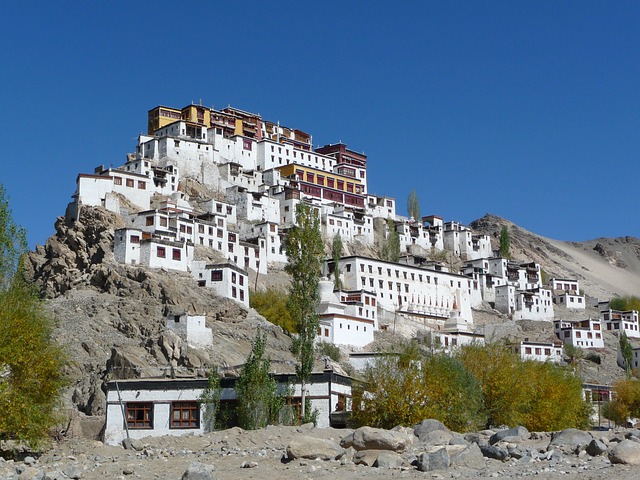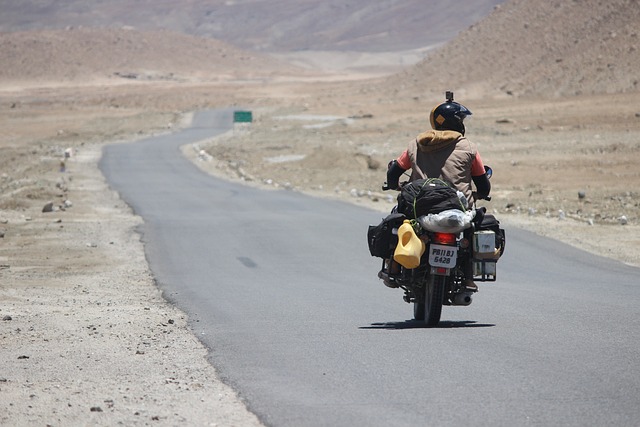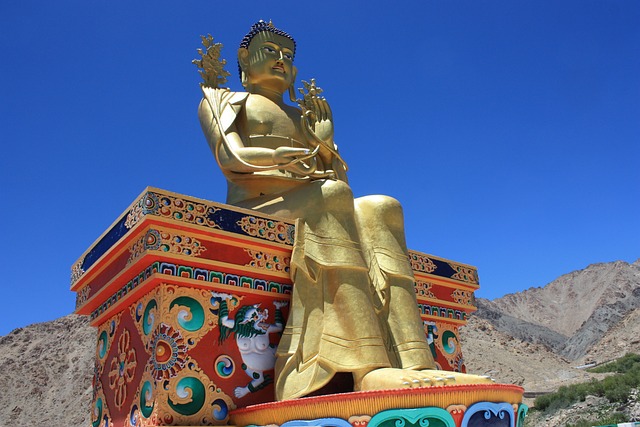Recently, around 30,000 people in Ladakh have protested to demand their rights and bring attention to the issues they face. This significant event has not been widely covered by mainstream media but has gained attraction on social media, highlighting the power of digital platforms to share real stories.
Understanding the Protest
In democratic countries, every person has the right to speak and protest. Protesting is a way for citizens to raise their voices and push for their rights when they feel the government is not addressing their needs.

Why Are People Protesting in Ladakh?
Environmental Sensitivity: Ladakh is an environmentally sensitive area. It is a high-altitude desert, meaning it has very little water, with low groundwater levels. This makes life challenging for its residents.
Harsh Climate: Ladakh’s climate is one of the harshest in India. It is a cold desert, with long, severe winters and very little rainfall. The unique geographical features and high elevation contribute to its extreme conditions.
Mr. Sonam Wangchuk, a prominent environmentalist, has started a fast unto death against the government’s actions in Ladakh.
The people of Ladakh have two main demands in their protest:
Independent Assembly for Ladakh: They want their own legislative assembly to govern Ladakh independently and address local issues more effectively.
Status of Schedule 6 for Ladakh: They are asking for Ladakh to be granted Schedule 6 status, which provides special protections and autonomy for tribal areas, helping to preserve their culture and control over land and resources. It gives power to make their own laws on the matter of forest, natural resources, social issue like marriage etc.
These demands aim to ensure better governance and protection for the unique cultural and environmental heritage of Ladakh. After the abrogation of Article 370 in August 2019, Ladakh, which was part of the state of Jammu and Kashmir, became a separate Union Territory. This change brought both hopes and concerns among the local population. Here’s a detailed yet simple explanation of the situation:
Hopes for Development
Government Focus: With Ladakh now a Union Territory, residents hoped for increased government attention and funding for infrastructure, education, healthcare, and other essential services.
Economic Opportunities: This will create economic opportunities for the local people.
Development since Article 370 Removal
Infrastructure Projects: The government has initiated various infrastructure projects, including road construction, better telecommunications, and development of new facilities.
Tourism Boost: Efforts have been made to promote Ladakh as a major tourist destination, leading to more hotels, restaurants, and related businesses.

Mining Projects: The government has also approved mining projects to tap into Ladakh’s natural resources, aiming to boost the local economy.
Concerns among the Native Population
Cultural Preservation: Many Ladakhis are worried that the influx of people from other parts of India will dilute their unique culture and traditions. Ladakh has a rich cultural heritage, deeply rooted in Tibetan Buddhism and local customs.

Property Ownership: Previously, Article 370 restricted outsiders from buying property in Ladakh. With these restrictions gone, there is fear that wealthy individuals and companies from outside will buy land, making it difficult for locals to afford property and potentially leading to displacement.
Environmental Impact: The massive construction and mining projects could harm Ladakh’s fragile environment. The region is known for its pristine natural beauty, and large-scale development could lead to pollution and ecological imbalance.
Youth Opportunities: While development brings jobs, there is concern that high-skilled and high-paying jobs will go to outsiders rather than local youth. This could limit the benefits locals receive from new economic opportunities.
Social Changes: An influx of outsiders might bring about social changes that could disrupt the traditional way of life in Ladakh. This includes changes in community dynamics and the potential for increased crime rates.
For the natives of Ladakh, it is difficult to trust the government. They see natural resources being exploited for the benefit of private companies, leading to environmental destruction. This is a concern not only in Ladakh but across India.
Examples of Environmental Impact in India
Hasdeo Forest: In central India, large parts of the Hasdeo forest are being cut down for mining. This deforestation harms the environment and wildlife, affecting the ecological balance.
Joshimath in Uttarakhand: This town is facing severe land subsidence, partly due to industrialization and construction activities. The ground is sinking, which could lead to a disaster for the local community.
Widespread Deforestation: Across India, forests are being cleared for mining, infrastructure, and development projects. This widespread deforestation leads to loss of biodiversity, soil erosion, and climate change.
While development brings economic benefits, it often comes at the cost of environmental degradation. Sustainable development is essential to ensure that progress does not ruin the environment. Key points to consider include it are crucial to manage natural resources responsibly to prevent exploitation and environmental damage. Development projects should adopt sustainable practices that minimize environmental impact, such as eco-friendly construction methods and renewable energy sources. Involving local communities in decision-making can help balance development needs with environmental protection.
Development is necessary for progress, but it should not come at the cost of destroying the environment. Sustainable development practices are essential to ensure that we protect our natural resources and preserve the environment for future generations.
In summary, while the removal of Article 370 has brought development opportunities to Ladakh, it also poses significant challenges. Addressing these concerns requires a careful and inclusive approach that balances economic growth with cultural preservation and environmental sustainability.
The Need for Balanced Development
The protests highlight the need for a balanced approach to development in Ladakh. Key considerations include:
Sustainable Development: Ensuring that development projects do not harm the environment. This means promoting eco-friendly tourism and enforcing strict environmental regulations for construction and mining.
Cultural Preservation: Protecting Ladakh’s rich cultural heritage by supporting local traditions, arts, and crafts. Development projects should be culturally sensitive and involve local communities in decision-making.
Regulated Property Laws: Implementing rules to control property sales can help prevent a land rush by outsiders and ensure locals retain control over their land.
Local Involvement: Engaging local communities in planning and development processes to ensure their needs and interests are prioritized. This includes creating job opportunities for local youth and supporting local businesses.
Conclusion
The protests in Ladakh are a call for attention to the region’s unique challenges. While development is necessary, it must be done in a way that preserves Ladakh’s environment and cultural heritage. The voices of the Ladakhi people must be heard and respected in shaping the future of this beautiful and fragile region.
